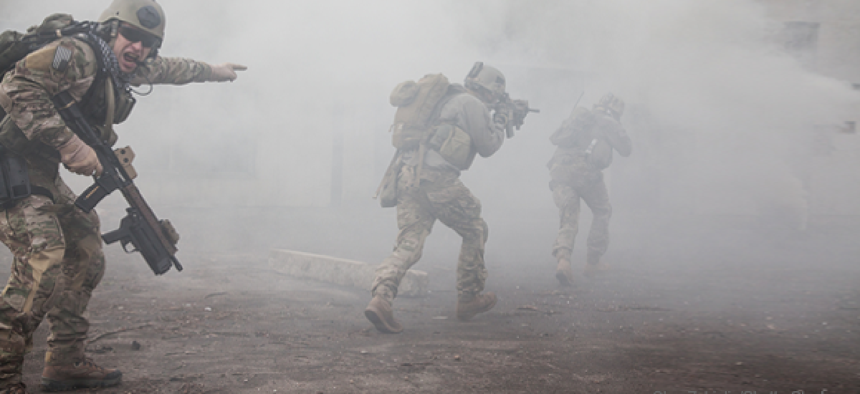Tracking physical responses, target accuracy to enhance combat marksmanship

The Office of Naval Research is testing whether technology can help it spot dips in warfighters’ performance or lethality.
To improve the marksmanship skills of Marines, the Office of Naval Research (ONR) is outfitting warfighters with sensors as it tracks their firing speed and accuracy.
Data from sensors that monitor physical stress like heartrate and speed of movement is combined with information on how fast shots are fired and how often they hit their targets. In a recent demo in Fredericksburg, Va., Marines ran between positions 50 feet apart where they crouched behind a barricade and took multiple shots at a specific target. The accumulated data was displayed on a tablet, presenting an immediate, detailed picture of a Marine’s overall marksmanship skills, according to a recent ONR article.
The demo tested two ORN-sponsored technologies: the Human Performance EcoSystem (HP EcoSystem), which measures the body’s response to physical stress; and the Joint Marksmanship Assessment Package (JMAP), which rates shot timing and accuracy as well as potential lethality.
The demo included live-fire “shoot-house” and outdoor range exercises, as well as “force-on-force” events involving live role players and non-lethal training ammunition, ONR said.
“These systems enable us to study and understand critical marksmanship variables that were not previously possible at the scale and speed needed for infantry training,” said Peter Squire, a program officer in ONR’s Warfighter Performance Department. “This enables us to move from an industrial-age training approach to an information-age one.”
While both HP EcoSystem and JMAP are built from commercially available hardware and sensors, specialized software and data-collection capabilities enable real-time measurements of warfighter performance.
Using physical responses such as heart rate and breathing, HP EcoSystem can evaluate how fatigue and stress affect shooting accuracy. The system can also consider how other factors like injuries or bad weather conditions can impact performance, ONR said.
JMAP measures lethality by identifying “whether shots fall into the ‘kill’ zones of either the head or chest” and also how fast shots were fired, officials said. The system can also measure performance across different types of weapons and associated accessories, such as scopes.
“By working these systems in tandem, you can identify when there’s a dip in performance or lethality,” said Timothy Parker, a marksmanship expert working with ONR’s Warfighter Performance Department. “From there, you can have that Marine run multiple tactical simulations to get faster and more resilient and accurate.”
Both HP EcoSystem and JMAP will give commanders the data they need to increase Marines’ proficiency across multiple weapons systems and combat scenarios.
“Marines might have to face peer and near-peer adversaries in dispersed, littoral environments,” Squire said. “We need them to be able to move and shoot faster and more accurately than their future adversaries. HP EcoSystem and JMAP are focused on enhancing their skill and resiliency to confront those threats.”
NEXT STORY: Bringing big data down to size





